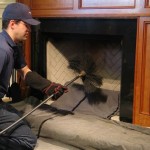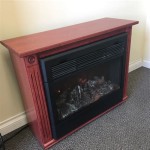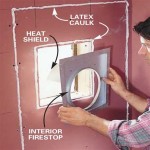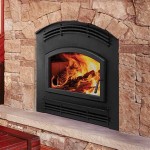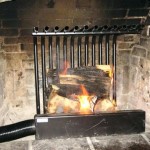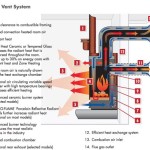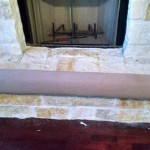240 Volt Electric Fireplaces: A Comprehensive Guide
Electric fireplaces have become increasingly popular as a modern and convenient alternative to traditional wood-burning fireplaces. Among the various types available, the 240-volt electric fireplace offers distinct advantages, particularly in terms of heating efficiency and overall performance. This article provides a detailed exploration of 240-volt electric fireplaces, covering their operational principles, benefits, installation considerations, and relevant safety aspects.
A 240-volt electric fireplace, as the name indicates, operates on a 240-volt electrical circuit, which is a standard voltage in many residential and commercial buildings. Unlike 120-volt models, which are typically plug-and-play, 240-volt fireplaces generally require dedicated wiring and professional installation. The higher voltage allows for a greater power output, translating into enhanced heating capabilities and the ability to effectively warm larger spaces.
The core functionality of an electric fireplace revolves around converting electrical energy into heat. This conversion is typically achieved through electric resistance heating. When electricity flows through a heating element, usually a coil of metal, the resistance of the metal causes it to heat up significantly. A fan then circulates the heat generated from the element into the room. The intensity of the heat can often be adjusted through a thermostat or other control mechanism, allowing users to maintain a comfortable temperature.
In addition to the heating element, electric fireplaces feature a visual element that simulates the appearance of a real fire. This is usually achieved through a combination of lights, mirrors, and rotating reflectors that create a flickering flame effect. Some advanced models incorporate LED technology and holographic projections to produce a more realistic and dynamic flame display. The visual component is often independent of the heating function, allowing users to enjoy the ambiance of a fire without generating heat, which is particularly useful during warmer months.
The design variations of 240-volt electric fireplaces are extensive, catering to diverse aesthetic preferences and spatial requirements. Wall-mounted units offer a sleek and modern look, while freestanding models provide flexibility in placement. Fireplace inserts are designed to be installed within existing fireplace openings, transforming traditional masonry fireplaces into efficient electric heating systems. Corner fireplaces are ideal for maximizing space utilization, and entertainment centers with integrated electric fireplaces combine functionality with style.
Enhanced Heating Capacity
One of the primary advantages of 240-volt electric fireplaces is their superior heating capacity compared to 120-volt models. The higher voltage allows for a greater wattage rating, typically ranging from 1,500 to 5,000 watts or more. This increased power translates into the ability to heat larger rooms more effectively. A 240-volt fireplace can often heat a space up to 1,000 square feet or more, depending on the specific model and insulation characteristics of the room. In contrast, a 120-volt fireplace is generally limited to heating smaller spaces, typically up to 400 square feet.
The increased heating capacity of a 240-volt electric fireplace can result in significant energy savings, especially in homes with multiple rooms. Instead of relying on central heating to warm the entire house, homeowners can use the fireplace as a supplemental heating source in the room they are occupying. This targeted heating approach can reduce overall energy consumption and lower heating bills. Furthermore, electric fireplaces are generally more efficient than traditional wood-burning fireplaces, as they eliminate the heat loss associated with venting and chimney draft.
The enhanced heating performance also makes 240-volt electric fireplaces a suitable option for colder climates or for individuals who prefer a warmer indoor environment. The ability to quickly and effectively heat a room provides a comfortable and inviting atmosphere, particularly during the winter months. The thermostat control allows for precise temperature regulation, ensuring that the desired level of warmth is maintained consistently.
Installation Considerations
The installation of a 240-volt electric fireplace differs significantly from that of a 120-volt model. Since 240-volt appliances require a dedicated circuit, it is essential to ensure that the home's electrical system is properly equipped. This typically involves running a new 240-volt circuit from the electrical panel to the location where the fireplace will be installed. The circuit must be protected by a correctly sized circuit breaker to prevent overloading and potential electrical hazards.
Due to the complexity of the electrical work involved, it is strongly recommended that a qualified electrician perform the installation. An electrician can assess the existing electrical system, determine the appropriate wire gauge and breaker size, and ensure that all connections are made correctly and safely. Improper installation can lead to electrical fires, equipment damage, and voided warranties. Local electrical codes and regulations must also be adhered to during the installation process.
In addition to the electrical wiring, the physical installation of the fireplace also requires careful consideration. Wall-mounted units must be securely attached to the wall using appropriate mounting hardware. Freestanding models should be placed on a level surface and away from flammable materials. Fireplace inserts must be properly fitted into the existing fireplace opening and secured in place. It is crucial to follow the manufacturer's instructions and guidelines to ensure a safe and stable installation.
Before initiating the installation, it is advisable to plan the layout of the room and determine the optimal placement of the fireplace. Consider factors such as furniture arrangement, viewing angles, and proximity to electrical outlets. Ensure that there is adequate clearance around the fireplace to prevent obstructions and allow for proper ventilation. The location of the thermostat should also be considered to ensure accurate temperature readings.
Safety Features and Maintenance
Safety is a paramount concern when operating any electrical appliance, and 240-volt electric fireplaces are no exception. Reputable manufacturers incorporate various safety features to minimize the risk of accidents and ensure safe operation. Overheat protection is a common feature that automatically shuts off the fireplace if it detects excessive temperatures. This prevents the unit from overheating and potentially causing a fire. Some models also include tip-over protection, which automatically shuts off the fireplace if it is accidentally knocked over.
Another important safety feature is a cool-touch surface. This design element ensures that the exterior of the fireplace remains relatively cool to the touch, even when the heating element is operating at full capacity. This reduces the risk of burns, particularly for children and pets. The front glass panel is often made of tempered glass, which is more resistant to breakage and shattering.
Proper maintenance is essential to ensure the longevity and safe operation of a 240-volt electric fireplace. Regular cleaning is necessary to remove dust and debris that can accumulate on the heating element and fan. Use a soft cloth or vacuum cleaner with a brush attachment to clean the exterior surfaces. Avoid using harsh chemicals or abrasive cleaners that can damage the finish. The flame effect components may also require periodic cleaning or replacement, depending on the specific model.
Routine inspections should be conducted to check for any signs of damage or wear. Inspect the electrical cord and plug for any fraying or cracks. Ensure that all connections are secure and that the circuit breaker is functioning properly. If any issues are detected, such as unusual noises or flickering lights, discontinue use and consult a qualified technician for repair. Never attempt to repair the fireplace yourself unless you have the necessary skills and experience.
It is also important to educate all household members on the safe operation of the electric fireplace. Emphasize the importance of keeping flammable materials away from the unit and avoiding overloading the electrical circuit. Ensure that children are supervised when the fireplace is in operation and that they understand the potential hazards associated with tampering with the appliance.
In summary, 240-volt electric fireplaces offer a compelling combination of enhanced heating capacity, aesthetic appeal, and safety features. While requiring professional installation, their ability to efficiently heat larger spaces and provide a realistic flame effect makes them a popular choice for homeowners seeking a modern and convenient heating solution. By understanding the operational principles, installation considerations, and safety aspects, users can enjoy the benefits of a 240-volt electric fireplace with confidence.

1500w 100v 240v Led Realistic Wood Fireplace 3d Fire Logs Electric China Made In Com

1500w 100v 240v Led Realistic Wood Fireplace 3d Fire Logs Electric China Made In Com

Dimplex Revillusion 36 Inch Built In Firebox With Glass Pane

Dimplex Revillusion 42 Inch Built In Electric Fireplace Weathered Concrete Firebox Heater Rbf42wc Fireplaces Depot

Clihome 50 In W Black Fan Forced Electric Fireplace The Fireplaces Department At Com

Dimplex Revillusion 42 Inch Built In Electric Fireplace With Herringbone Brick Firebox Heater Rbf42 Fireplaces Depot

Electric Fireplace Suite With 39 Inch Freestanding Mantel Smallbee

Wood Mantel Heater Remote Control 110 240v Electric Fireplace Insert Tv Stand For Home Furniture China Modern Made In Com

White Freestanding Electric Fireplace Suite With Realistic Log Effect Amberglo Agl029 Appliances Direct

Boyel Living Black 30 In 400 Sq Ft Recessed Electric Fireplace With Remote Control And Multi Color Flame Vl Ef28t The Home Depot
Related Posts

